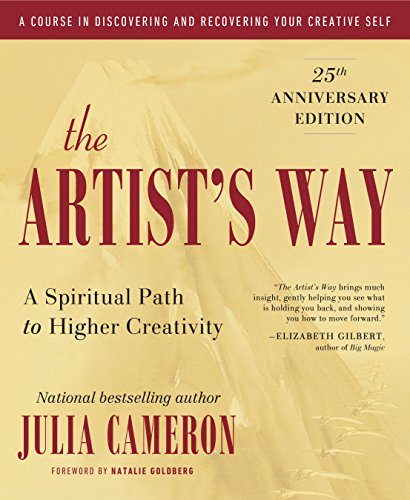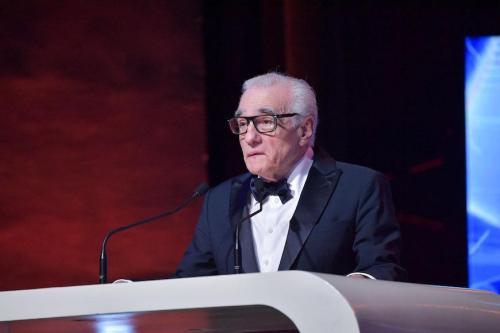Our editors independently select these products. Making a purchase through our links may earn Well+Good a commission
Why everyone you know has read “The Artist’s Way”—and 5 things you never knew about the author
Odds are, you have multiple friends obsessed with "The Artist's Way," a self-help juggernaut—but its publicity-shy author is less well-known. Until now.

“Have you read The Artist’s Way? You have to. You have to.” I can’t count how many times I’ve heard this throughout my life. The first time was in my mid-20s, from a co-worker at a magazine who talked about it all the time. The other thing she spoke about constantly: her church. And Jesus. Nothing wrong with that—but in a work setting? That’s unusual, even for the Bible belt. (Texan here.) Her fervency, paired with the fact that “way” was in the title, led me to assume the 1992 book by Julia Cameron was written solely for devout (and creative) Christians. So I skipped it, for years, even as people repeated the same “have you read it” refrain.

When I finally gave the The Artist’s Way a chance, more than a decade later, it (shockingly) lived up to the hype. It was like therapy and a brain reboot and a writer’s retreat, all in one very structured, prescriptive package. Short version: The book takes you through a 12-week program of journaling exercises and other specific “assignments,” including the hallmark of her system: daily “morning pages”—where you write three pages by hand the minute you wake up, reputedly to clear out the mental cobwebs and get your creativity flowing—and weekly “artist’s dates” that you have to go on by yourself.
If this is all sounding familiar to you, it’s because you probably have at least two friends who have read the book and done the program—and begged you to do it, too. (Guilty.) But, as much as her method is talked about, Cameron herself is somewhat of a mystery, or at least a rare breed: a publicity-shy self-help guru.
More than 25 years and 4 million copies later, Cameron’s book is still very much in the zeitgeist, with love letters from The New Yorker (score), as well as odes from people who despise her actual writing (from The Cut: “This terrible self-help book is actually making me a better artist“). When even your haters are helping you sell books, you’ve got something special—but what is it?
Here are 5 things you probably didn’t know about Julia Cameron, author of The Artist’s Way.

1. She was married to Martin Scorsese
Even more surprising: She met him on assignment for nudie mag Oui, according to a Cameron profile The New York Times published this weekend. (Hey, it was the ’70s!) They were only married for about a year, but have a daughter together, Domenica.
2. And then there was Andy Warhol
Warhol escorted Cameron to the premiere of Scorsese’s New York, New York—made during her marriage (and breakup) with the director—and described her in his diary as a “lush,” according to her 2006 memoir Floor Sample. Later, trying to get treatment for alcoholism, she says she sought help from a doctor who told her she’s just a “sensitive young woman.” (Sounds familiar.)
3. Her fan club is full of famous faces
The Times story name-checks everyone from Alicia Keys to author Patricia Cornwell and productivity guru Tim Ferriss. And Elizabeth Gilbert says that without The Artist’s Way, there would be no Eat Pray Love.
4. She reads no newspapers or social media
Yeah, Cameron was “unplugging” way before it became a millennial rallying cry. “Media deprivation” is a weeklong practice if you’re doing The Artist’s Way program, the idea being that if you limit the flow of ideas into your brain, you’ll make room for ideas to pop up from your brain. The Times reports that an assistant runs her Twitter and Instagram accounts, so that Cameron can do low-grade “deprivation” all the time.
5. She still does Artist’s Way exercises—and she lives exactly where you imagine she would
Yes, Cameron does her morning pages every day—and an exercise in her book inspired her to move across the country. After decades in Manhattan, Cameron now lives in “a spare adobe house in Santa Fe, overlooking an acre of scrub and the Sangre de Cristo mountain range,” according to The New York Times (because of course she does). The move west came after she did an exercise from her book, where you list 25 things you love. “I wrote juniper, sage brush, chili, mountains and sky and I said, ‘This is not the Chrysler Building,’” she told The Times.
Sign Up for Our Daily Newsletter
Get all the latest in wellness, trends, food, fitness, beauty, and more delivered right to your inbox.
Got it, you've been added to our email list.










